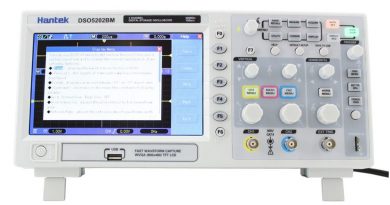Breadboarding Basics
When you design circuits with a breadboard you’ll start out by creating electrical equivalents of schematics. Breadboards have a number of contact points, which are typically organized in groups of five or six connected columns, into which you insert the “legs” of components.
Your breadboard will have two or more rows of contacts that run the entire length of the breadboard, usually with red or blue stripes beside the rows (note that adjacent contact columns will not be connected). Typically used for power supply connections, these long rows of contacts are known as buses. Contact columns are grouped in sixes. Contact rows sometimes need to be connected with jumper wires in order to connect the full length of the row.
The simplest way to install an integrated circuit, or IC, on the breadboard is by using an insertion tool designed specifically for the task. If you don’t have a this type of tool you’ll delicately arrange the integrated circuit on the board and align the IC’s legs with the contact points and then steadily push down on the IC to seat its legs in the contact points — don’t use an IC with bent or broken legs. You will install your IC across the middle of the breadboard with connections bridging each column of contacts.
The following are some tips that will simplify circuit construction and troubleshooting. Use red buses for positive power supply connections and blue buses for negative connections. Blue buses are typically used for grounding the circuit. As previously stated, use jumper wires to create continuous bus lines on your breadboard.
It’s wise to use the same color jumper wires for connections to and from the power supply buses — red for positive and blue for negative — and same-colored jumper wires for similar signal types. Don’t cross wires over ICs or you might have to replace a bad IC. Be sure to spread the circuit across the board: it will be easier to design and troubleshoot your circuit. And don’t forget to wire neatly as it is the most important habit you can develop, even as a beginner.

